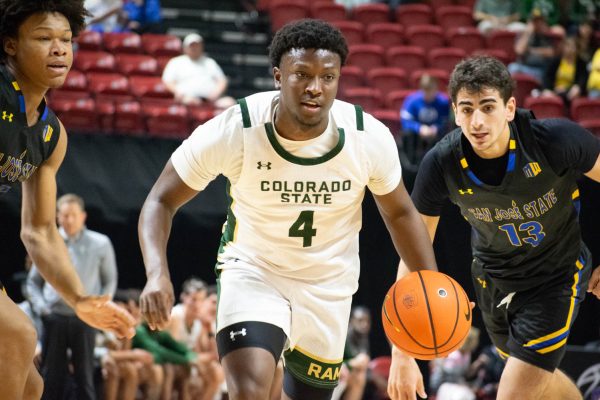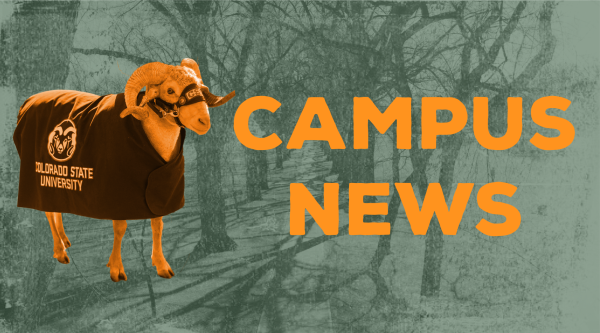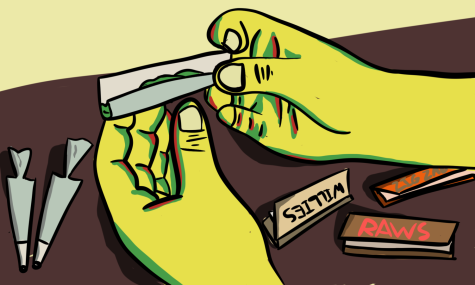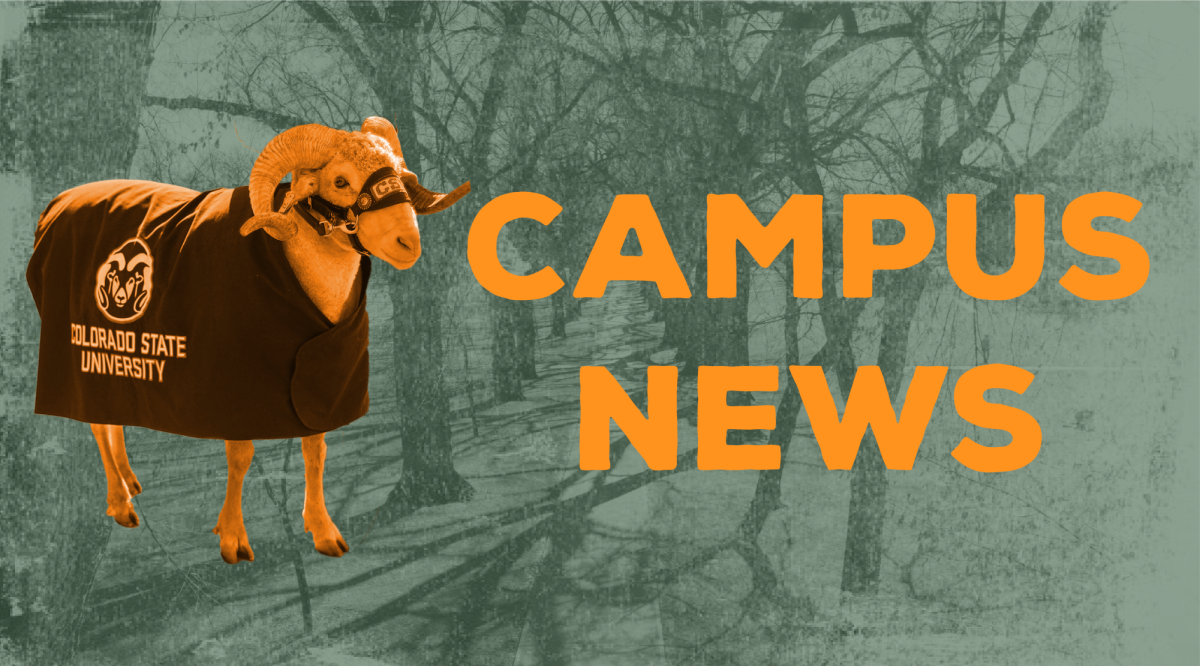
One of the first questions an expecting couple asks is the sex of their child. A girl means pink walls, frilly outfits, flowered headbands and plenty of stuffed toys appropriate for a little girl. A boy means blue or green onesies adorned with trucks and dinosaurs and a future of Ninja Turtles and contact sports.
But what if the bouncing baby doesn’t fit into male or female gender classifications? What if the insides don’t match the outsides, or the outsides are completely ambiguous?
Ad
One CSU alumna and a Fort Collins community member shared their stories.
More than just male and female
Contrary to what many are taught as children, there are more than two sexes in this world. In fact, many would argue that sex is more of a spectrum than just pink or blue.
“Gender identity is what you see in your head. For some, assigned gender and gender identity don’t match,” said Prof. Betsy Cairo who teaches a psychology of human sexuality course at CSU. “What happens if you ‘pick’ the wrong gender?”
At birth, most are assigned a sex based on what the doctor sees between their legs. But some kids are a little more ambiguous and others may identify differently from their genitalia.
It is these children that may face a future of surgeries. Parents and doctors are often faced with assigning a sex, or raising their child as neither male nor female — many parents elect for the first option. Although the practices are changing, it was once customary to change these children at an early age, according to Gerald Callahan a professor in the Department of Immunology at CSU who has published work on intersexuality.
“Intersex is a general term used for a variety of conditions in which a person is born with a reproductive or sexual anatomy that doesn’t seem to fit the typical definitions of female or male,” according to The Intersex Society of North America (INSA). Intersex can include true hermaphrodites, differing sex karyotypes (meaning not XX or XY chromosomes which determine gender), those with complete androgen (male sex hormone) insensitivity and even those who have atypical genitalia.
Medical experts and advocacy groups have slightly differing opinions of who is considered intersex, according to the INSA.
In American medicine, these individuals are referred to as having a “disorder of sex development,” or DSD for short. It is currently the most widely accepted term used to describe the status, according to Noi Liang who volunteers at Children’s Hospital and has complete androgen insensitivity herself.
Ad
In the U.S., approximately one in 2,500 babies is born intersex, according to Dana Zzyym, who speaks on behalf of the intersex community and has true hermaphroditism.
Dana’s story
When Dana Zzyym was born, she fell outside the gender binary. She had a different name — a boy’s name. But when she was born, her doctor did not exclaim, “it’s a boy!”
It took approximately one month for her parents and doctors to come to the agreement that Dana was to be made into a boy.
Dana was born a true hermaphrodite, meaning she had both ovarian tissue and testicular tissue, though neither set of genitalia was capable of sexual reproduction. Externally, she was completely ambiguous and it was decided early on that she would undergo what doctors call normalizing surgery.
At five years-old, Dana went into her first serious gender reassignment surgery at a military hospital — courtesy of her life as an army brat. The doctors gave her male genitalia, but she never quite fit in with her brothers and male classmates.
“I don’t even know everything that they did. I never will,” Dana said.
As a traveling Army child, Dana rarely kept the same doctors. Without the slightest inkling as to why she was different, she had no idea where to start.
“I knew that I was different,” Dana said, “I just didn’t know how. I had no one to ask. It was a taboo subject.”
Early complications with her masculinizing surgery caused Dana to wet the bed, further distancing her from her brothers and potential friends.
When she hit puberty, the penis that doctors had constructed, split. She would go through more surgeries to ‘correct’ the problem.
When Dana finally left Michigan, she was still confused. In the late 1980s, she enrolled in a college in a town that was a far cry from her childhood stomping grounds — a growing city by the name of Fort Collins.
Dana studied fibers. It took her nine years of studying and working for the school to graduate, but she used the time for a little soul searching. At CSU, Dana discovered alternative approaches to sexuality including transgender.
“I had to learn that I didn’t fit into male or female,” she said.
For a while, Dana thought that maybe she was in the wrong body (a male body) and began feminizing surgeries. When her parents found out about her change, they ceased all contact.
She tried out dating –– even marriage –– but found that the conversations didn’t get easier.
“Every time you get intimate, you have to talk about it and expose yourself,” Dana said.
It didn’t help that a lifetime of surgeries had left her without pleasurable sensation and more often left her in pain.
For about fifty years, Dana struggled with her identity. She always had questions, but was not satisfied with the answers. In her early fifties, she finally figured it out — she was intersex. Half a lifetime of confusion and shattered self-esteem finally began to make sense. Dana dedicated herself to a new cause — fighting for the kids who, like her, were ‘cut’ without their knowledge.
Fighting for the cause
Dana now speaks about her life experiences openly. She has spoken to healthcare professionals at Poudre Valley Hospital, marched in Washington, D.C., visited CSU classes and lobbied for equal rights.
She has found that people are not only full of questions, but are also ready to learn about this lesser-known part of the community.
“Students in my class were riveted by her stories, and she gave an excellent presentation and explanation of her own background, struggles, and victories,” said Sarah Sloane, a CSU English professor who taught a Gay and Lesbian Literature course.
Department of Immunology Prof. Callahan has also brought Dana in to speak to honors students.
Dana believes that opening the conversation is the first step, but there are more goals in her future. For now, speaking out has given her life a new meaning.
“I had to learn how to talk about it. Once you find what it is you need to do, life becomes good,” she said. “For me to talk about this is the most freeing experience I’ve had.”
And she has something to say.
“Leave these kids without surgery,” she said. “If you become parents or aunts, or uncles having an intersex child, become educated before making any decisions. Think about the long-term effects. Don’t force something on them.”
Noi’s story
When Noi Liang was born, both doctors and parents declared her a healthy baby girl. Externally she looked female, but her genetics told a different story.
When Noi was two years-old, her mother found small protrusions in her abdomen and thought they were hernias in her vital organs.
When the doctors opened up her abdomen, they found something very different than they expected — no uterus and two testicles resting internally. Rather than remove them, the doctors “pushed them back in,” according to Noi.
“I’m really grateful for that,” Noi said.
Luckily for her, this was a small and unexpected gift for her sexual development.
Noi has an XY karyotype, meaning she’s male according to technical medical classification. However, her body is completely insensitive to androgens — testosterone primarily. At every turn that the naturally-occurring testosterone would have masculinized her, her body could not accept the hormones.
Complete androgen insensitivity syndrome, or AIS, affects about one in 20,000 children in the U.S.. In all cases, babies with an XY karyotype present as female.
The testes the doctors left in Noi actually feminized her appearance further. The excess testosterone was converted into estrogen by her body, giving her curves, a higher voice and all of the secondary female characteristics.
At 16, Noi had never menstruated. Doctors had never revealed their discovery to Noi, and if her mother knew, she had not said anything either.
Following her examination, she was told she had twisted ovaries and had been born without a uterus –– which was half true. Her doctors said they needed to remove her ‘ovaries’ before they became cancerous.
Noi did not discover that they actually removed testes until she was 30 years-old.
When looking at her medical records in her early thirties, Noi found a curious piece of information: karyotype XY. Further investigating showed her childhood surgery and even a letter between doctor and gynecologist.
“I don’t think (my gynecologist) was right to do it, but she did it for the right reasons,” Noi said. “She made her decisions based on what she thought was best for me. If I’d had a more severe impact to my quality of life, I’d probably feel differently.”
Since her discovery, Noi has taken steps to educate herself. She joined an international support group, AIS-DSD Support Group for Women and Families.
“Part of the healing process for most of us, is meeting others,” Noi said.
Through her support group, Noi has met women in countries across the globe who have the same androgen insensitivity.
She also started volunteering at the Children’s Hospital for Sexual development Outcomes Achieving Results (SOAR) Clinics.
The clinics are held several times per year and allow complete medical care for children with DSD. As a volunteer, Noi supports families and kids as they go through their examinations and tests.
“My goal is not to just be there for the patients, but also to influence the doctors,” Noi said. By using proper terminology and treating the children with respect, Noi hopes to set a standard for everyone else.
“All of humanity lies on a gender spectrum. It’s never as simple as male and female,” Noi said. “It doesn’t work that way in terms of biology and it doesn’t work that way in terms of identity.”
With most people, she doesn’t have to talk about AIS, but has found that the world is getting more understanding when it does come up.
“Some people don’t know how to react. Most people are accepting and it doesn’t make a difference,” Noi said.
Noi lives her life as a normal woman. She takes hormones daily, works a full-time job and comes home to her fiancé each night.
“My advice to all parents is: when a child is born, just support them in who they want to be and how they express themselves,” Noi said. “Don’t make quick, irrevocable decisions about a child’s body.”
Editor’s note: Dana Zzyym has offered to speak to any class or group here at CSU. Noi Liang has offered to talk with any student or individual who would like support or resources. Zzym and Liang can be reached at mariahwenzel@aol.com.
Collegian Senior Reporter and Design Editor Mariah Wenzel can be reached at news@collegian.com. Follow her on Twitter @mariahcwenzel.








